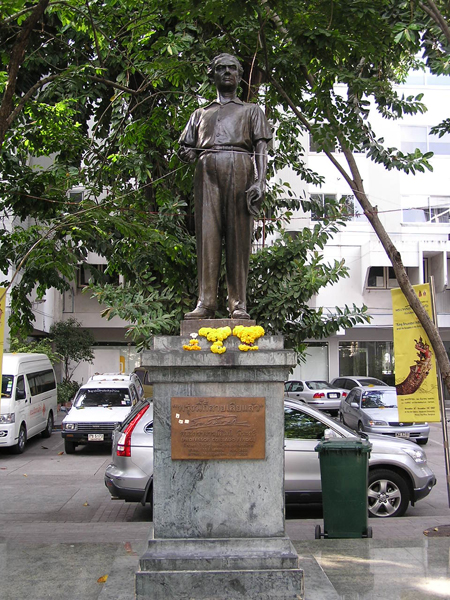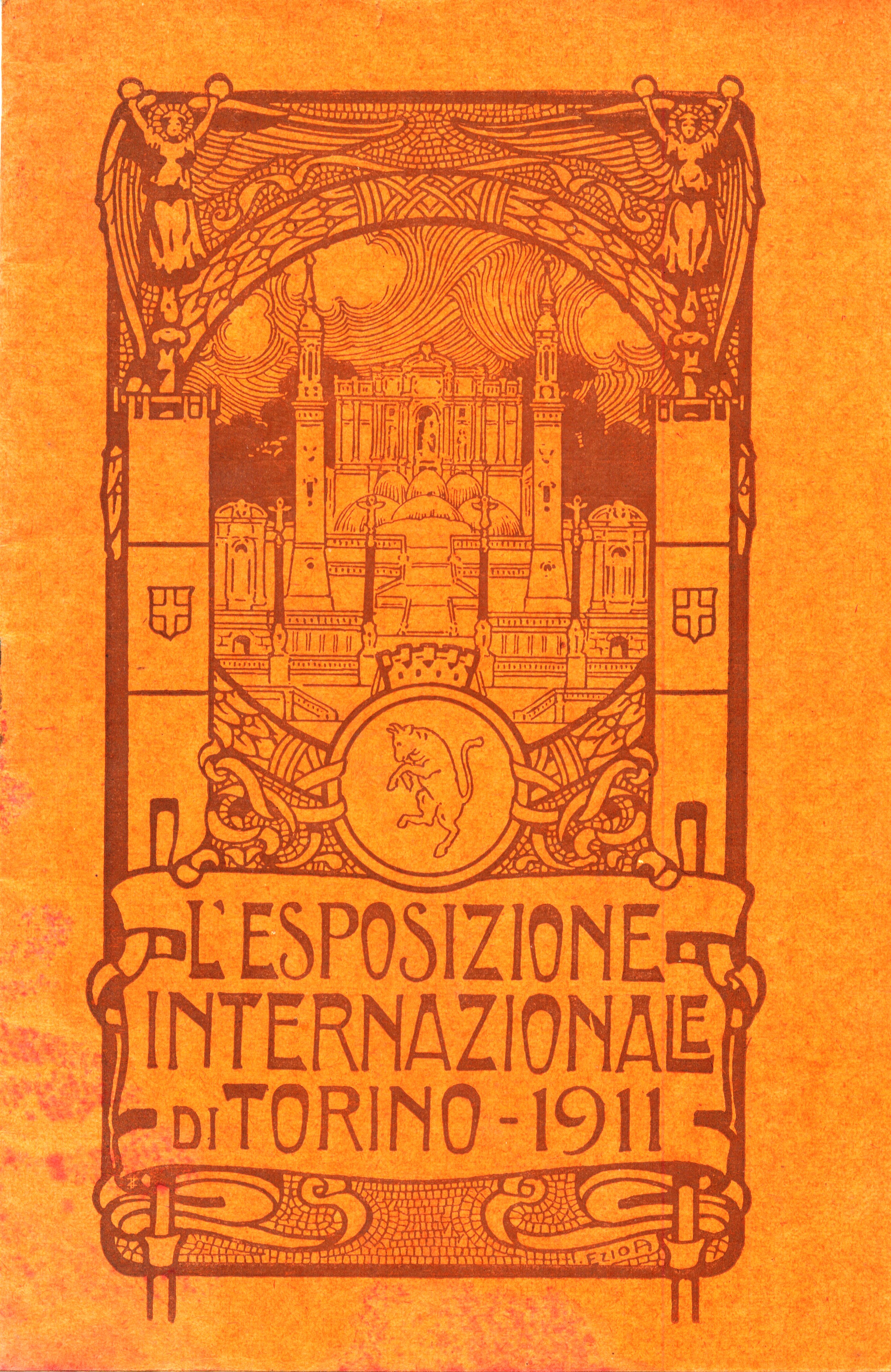|
Gerolamo Emilio Gerini
Gerolamo Emilio Gerini ( th, พระสารสาสน์พลขันธ์, ) was born in Cisano sul Neva, Province of Savona, Kingdom of Italy on March 1, 1860. He was the elder son of Carlo, Professor of Oenology at the University of Turin and Veronica Rosso. After the primary studies he gets a scholarship for talented students and enters the Royal Military Academy of Modena. In August 1879 he graduated second lieutenant of infantry, and was assigned to the 13° Regiment “Pinerolo” in Perugia. In September 1881 he moved to Bangkok, Thailand (then Siam) and joined the Siamese Army where he became a lieutenant. In 1883 he left the Army to serve as the secretary of the minister of the northern division, Maha Mala, uncle of Rama V, King Chulalongkorn, in such assignment he travels and visits most of the Country, acquiring a perfect mastery of Thai language and also of other local languages, such as Malay, Burmese, Mon, Khmer and many local dialects. Moreover, mast ... [...More Info...] [...Related Items...] OR: [Wikipedia] [Google] [Baidu] |
Cisano Sul Neva
Cisano sul Neva ( Genoese: ) is a ''comune'' (municipality) in the Province of Savona in the Italian region Liguria, located about southwest of Genoa and about southwest of Savona. Located in the Val Neva, the territory of Cisano sul Neva borders those of the municipalities of Albenga, Arnasco, Balestrino, Ceriale and Zuccarello. Etymology The comune gets its name from the Neva, a stram flowing down from the Ligurian Alps and crossing its territory. History The town was part of the Marca Aleramica in the 10th century, and in 1091 it became a possession of Boniface del Vasto. Later it was under the Clavesana family, and in 1274 it was acquired by the commune of Albenga, which fortified it. Subsequently it was part of the Republic of Genoa. In the 17th century it was occupied by Savoy soldiers. In 1794–95 Cisano was the seat of fightings between Austrian and French troops. In 1815 it was annexed to the Kingdom of Sardinia, becoming part of unified Italy in 1861. The ... [...More Info...] [...Related Items...] OR: [Wikipedia] [Google] [Baidu] |
Sakdina
''Sakdina'' ( th, ศักดินา) was a system of social hierarchy in use from the Ayutthaya to early Rattanakosin periods of Thai history. It assigned a numerical rank to each person depending on their status, and served to determine their precedence in society, and especially among the nobility. The numbers represented the number of ''rai'' of land a person was entitled to own—''sakdina'' literally translates as "field prestige"—although there is no evidence that it was employed literally. The Three Seals Law, for example, specifies a ''sakdina'' of 100,000 for the '' Maha Uparat'', 10,000 for the Chao Phraya Chakri, 600 for learned Buddhist monks, 20 for commoners and 5 for slaves. The term is also used to refer to the feudal-like social system of the period, where common freemen or ''phrai'' () were subject to conscription or corvée labour in service of the kingdom for half of the months of the year, under the control of an overseer or ''munnai'' (). Since 1945, th ... [...More Info...] [...Related Items...] OR: [Wikipedia] [Google] [Baidu] |
Silpakorn University
Silpakorn University (SU.) ( th, มหาวิทยาลัยศิลปากร; ) is a national university in Thailand. The university was founded in Bangkok in 1943 by Tuscan–born art professor Corrado Feroci, who took the Thai name Silpa Bhirasri when he became a Thai citizen. It began as a fine arts university and now includes many other faculties as well. In 2016, it has 25,210 students. History Silpakorn University was originally established as the School of Fine Arts under Thailand's Fine Arts Department in 1933. The school offered the only painting and sculpture programs and waived tuition fees for government officials and students. Its creation owes much to the almost lifetime devotion of Professor Silpa Bhirasri, an Italian sculptor (formerly Corrado Feroci) who was commissioned during the reign of King Rama VI to work in the Fine Arts Department. He subsequently enlarged his classes to include greater members of the interested public before setting up the ... [...More Info...] [...Related Items...] OR: [Wikipedia] [Google] [Baidu] |
Silpa Bhirasri
Silpa Bhirasri ( th, ศิลป์ พีระศรี; ; ), born Corrado Feroci (15 September 1892 – 14 May 1962), was a Tuscan-born Thai sculptor. He is considered the father of modern art in Thailand and was instrumental in the founding of today's Silpakorn University. Life Born in Florence, he studied at the Royal Art Academy of Florence and taught there from 1914 to 1923. Feroci was invited to Thailand in 1923 to teach Western sculpture at the Fine Arts Department of the Ministry of Palace Affairs. He was appointed as a sculptor in 1924 on a three-year contract for 800 baht per month. In 1943, he founded what later became Silpakorn University, the University of Fine Arts. When Italy surrendered to the Allies during World War II, Feroci changed his name and became a Thai national in 1944 to avoid arrest by the occupying Japanese army. Previously estranged from his wife in Italy, in his later years he married one of his Thai students. Feroci / Bhirasri was the de ... [...More Info...] [...Related Items...] OR: [Wikipedia] [Google] [Baidu] |
University Of Naples Federico II
The University of Naples Federico II ( it, Università degli Studi di Napoli Federico II) is a public university in Naples, Italy. Founded in 1224, it is the oldest public non-sectarian university in the world, and is now organized into 26 departments. It was Europe's first university dedicated to training secular administrative staff, and is one of the oldest academic institutions in continuous operation. Federico II is the third University in Italy by number of students enrolled, but despite its size it is still one of the best universities in Italy and the world, in southern Italy it leads 1st Ranking since it started, being particularly notable for research; in 2015 it was ranked among the top 100 universities in the world by citations per paper. The university is named after its founder Frederick II. In October 2016 the university hosted the first ever Apple IOS Developer Academy and in 2018 the Cisco Digital Transformation Lab. History The university of Naples Federico II ... [...More Info...] [...Related Items...] OR: [Wikipedia] [Google] [Baidu] |
École Française D'Extrême-Orient
The French School of the Far East (french: École française d'Extrême-Orient, ), abbreviated EFEO, is an associated college of PSL University dedicated to the study of Asian societies. It was founded in 1900 with headquarters in Hanoi in what was then French Indochina. After the independence of Vietnam, its headquarters were transferred to Phnom Penh in 1957 and subsequently to Paris in 1975. Its main fields of research are archaeology, philology and the study of modern Asian societies. Since 1907, the EFEO has been in charge of conservation work at the archeological site of Angkor. EFEO romanization system A romanization system for Mandarin was developed by the EFEO. It shares a few similarities with Wade-Giles and Hanyu Pinyin. In modern times, it has been superseded by Hanyu Pinyin. The differences between the three romanization systems are shown in the following table: Directors *1900: Louis Finot *1905: Alfred Foucher *1908: Claude-Eugène Maitre *1920: Louis ... [...More Info...] [...Related Items...] OR: [Wikipedia] [Google] [Baidu] |
Royal Geographical Society
The Royal Geographical Society (with the Institute of British Geographers), often shortened to RGS, is a learned society and professional body for geography based in the United Kingdom. Founded in 1830 for the advancement of geographical sciences, the Society has 16,000 members, with its work reaching the public through publications, research groups and lectures. The Society was founded in 1830 under the name ''Geographical Society of London'' as an institution to promote the 'advancement of geographical science'. It later absorbed the older African Association, which had been founded by Sir Joseph Banks in 1788, as well as the Raleigh Club and the Palestine Association. In 1995 it merged with the Institute of British Geographers, a body for academic geographers, to officially become the Royal Geographical Society ''with IBG''. The society is governed by its Council, which is chaired by the Society's President, according to a set of statutes and standing orders. The members ... [...More Info...] [...Related Items...] OR: [Wikipedia] [Google] [Baidu] |
Royal Asiatic Society
The Royal Asiatic Society of Great Britain and Ireland, commonly known as the Royal Asiatic Society (RAS), was established, according to its royal charter of 11 August 1824, to further "the investigation of subjects connected with and for the encouragement of science, literature and the arts in relation to Asia." From its incorporation the society has been a forum, through lectures, its journal, and other publications, for scholarship relating to Asian culture and society of the highest level. It is the United Kingdom's senior learned society in the field of Asian studies. Fellows of the society are elected regularly. Fellows include highly accomplished and notable scholars of Asian studies. They are entitled to use the post-nominal letters ''FRAS''.The Oxford Dictionary of Abbreviations, 2nd edition, Market House Books Ltd and Oxford University Press, 1998, ed. Judy Pearsall, Sara Tulloch et al., p. 175Debrett's Peerage and Baronetage 2011, Debrett's Peerage Ltd, p. 26The Inte ... [...More Info...] [...Related Items...] OR: [Wikipedia] [Google] [Baidu] |
Vittorio Emanuele III
Victor Emmanuel III (Vittorio Emanuele Ferdinando Maria Gennaro di Savoia; 11 November 1869 – 28 December 1947) was King of Italy from 29 July 1900 until his abdication on 9 May 1946. He also reigned as Emperor of Ethiopia (1936–1941) and King of the Albanians (1939–1943). During his reign of nearly 46 years, which began after the assassination of his father Umberto I, the Kingdom of Italy became involved in two world wars. His reign also encompassed the birth, rise, and fall of Italian Fascism and its regime. During the First World War, Victor Emmanuel III accepted the resignation of Prime Minister Paolo Boselli and named Vittorio Emanuele Orlando (the ''premier of victory'') in his place. Despite being on the winning side of the First World War, Italy did not get all the territories which had been promised to it in the 1915 Treaty of London; the Treaty of Versailles, ending the war, failed to give Italy its demands for Fiume and Dalmatia. This mutilated victory ... [...More Info...] [...Related Items...] OR: [Wikipedia] [Google] [Baidu] |
Turin International
The Turin International was a world's fair held in Turin in 1911 titled ''Esposizione internazionale dell'industria e del lavoro''. It received 7,409,145 visits and covered 247 acres. Summary The fair opened on 29 April, was held just nine years after an earlier Turin fair which had focused on the decorative arts, and at the same time as another Italian fair in Rome, also with an arts focus. This fair deliberately distinguished itself by focusing on industry and labour. The fair was held in the Parco del Valentino (as were the three previous Turin fairs in 1884, 1885 and 1902 and the subsequent 1924 Turin fair). Participants Participating countries were Argentina, Austria, Belgium, Bolivia, Brazil, Bulgaria, Chile, China, Colombia, Denmark, Ecuador, France, Germany, Greece, Hungary, Italy, Japan, Mexico, Netherlands, Nicaragua, Peru, Russia, Serbia, Siam, Spain, Switzerland, Turkey, United Kingdom, United States and Uruguay. National pavilions The Art Nouveau Hungarian pa ... [...More Info...] [...Related Items...] OR: [Wikipedia] [Google] [Baidu] |





